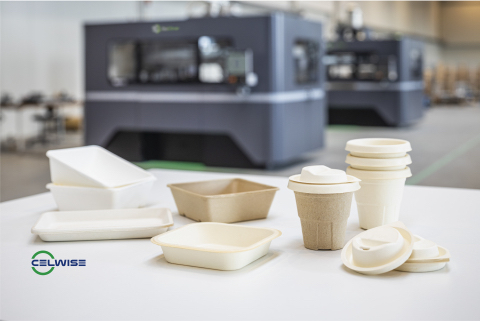3D Printed Tooling Sets a Place for Eco-Friendly Packaging
Binder jetting technology enables unique tooling to be manufactured quickly at a fraction of the cost.

Metal tooling used to produce Celwise’s sustainable molded fiber products is 3D printed with ExOne’s binder jetting technology. Image Courtesy of ExOne
Latest News
September 22, 2021
Who wouldn’t raise a glass to more sustainable and eco-friendly packaging and paper-like products?
Buttressed by unique metal tooling produced using binder jetting 3D printing technology from ExOne, Celwise AB of Sweden is transforming wood and other cellulose fiber into a wide range of sustainable packaging and products. Celwise’s patented innovation produces a water-resistant molded fiber product that presents like a luxurious blend of wood and plastic, according to Celwise officials.
Key to its patented technology is unique tooling and machines that transform the conventional process of removing water from cellulose fiber for molded products that must be coated for water resistance—for example, drinking cups or plates. While common cellulose fiber-based (paper) product manufacturing performs these sequences relatively slowly, the Celwise technique accelerates water removal in a new process that promotes the re-bonding of cellulose fibers more quickly to create a new type of paper product that is strong, wood-like, and water resistant, officials said.
Key to the ability to deliver these sustainable goods is metal tooling that sports unique features that would be impossible to replicate without 3D printing. That’s where the ExOne binder jet 3D printer comes in, enabling Celwise to produces the required tools and do so faster (estimates suggest a 20% time savings over alternative processes) as well as delivering a cost savings of between 30% and 40%, claims David Pierce, Celwise owner and co-founder. The metal tools are 3D printed in 316L stainless steel for volume production.
Traditional tooling for these molds are typically machined metal, which has limitations in the kinds of designs that can be affordably produced, especially if it’s to accommodate extra details or custom geometries, maintain officials at ExOne. “Our binder jetting technology allows for more organic shapes and channels without the added cost you would pay for in machining those shapes,” the officials says. “Companies can also change their packaging designs without a penalty that comes with scrapping an expensive machined tool to produce another. Binder jetting is a truly liberating form of producing metal tools affordably.”
ExOne’s binder jet 3D printing technology enables design freedom via its ability to transform powdered materials such as metal, sand, or ceramic into highly dense and functional precision parts. The printhead deposits the binder into a bed of powder particles creating a solid part one layer at a time; the final part is sintered in a furnace to fuse the particles together into a solid object.
To learn more about how binder jetting 3D printing technology works, check out this video.
More ExOne Coverage
Subscribe to our FREE magazine, FREE email newsletters or both!
Latest News
About the Author
Beth Stackpole is a contributing editor to Digital Engineering. Send e-mail about this article to DE-Editors@digitaleng.news.
Follow DE





